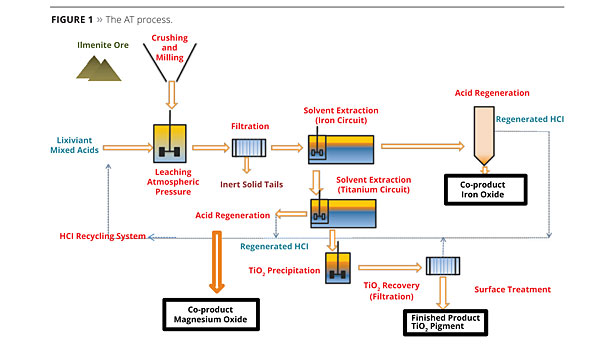-
Gallery of Images:

-
Published March 2016. This report covers specialty chemicals that are used in yarn preparation, fabric formation, fabrication, and finishing. It covers the worldwide textile chemical industry, and includes a detailed discussion of the worldwide textile industry. Chemical finishing of textiles special knowledge, almost comparable to a secret science, than in chemical finishing. 1 gives some of the general requirements expected of a chemical finish. As can be seen, they can be quite daunting. Hand Feels Finishing Agent The chemical softening is the softening agent on the fabric softening method. Effect of softening agent is to reduce yarn fabric, friction between the friction between the fibers and fabrics and the human body. Chemical finishing of textiles is an essential reference for all academic and industrial textile chemists and for those studying textile education programmes. Key Features Discusses the advantages and disadvantages of every important type of chemical finish Textiles by W. chemical finishing of textiles woodhead Schindler and P. chemical finishing of textiles pdf A volume in Woodhead Publishing Series in Textiles. Value added finishing of textiles is a new development in textiles processing and these fluorochemical finishes impart water repellency, oil repellency, soil repellency. Note: Citations are based on reference standards. However, formatting rules can vary widely between applications and fields of interest or study. The specific requirements or preferences of your reviewing publisher, classroom teacher, institution or organization should be applied. antimicrobial finish: Chemical treatment applied to a fabric to combat growth of diseasecausing microbes, general bacteria, infectious The name of True Textiles inhouse water and oil stain repellent finish. boucl: A novelty yarn with bumps and loops; it is used to create a fabric that exhibits a knotty, loopy surface texture. With about twenty different types of chemical finishes and several thousand finishing agents, chemical finishing professionals require a solid basis of textile chemical knowledge and technical understanding, as well as some practical experience. Most fabrics are finished in what is called wet processing where the process is accomplished by applying a liquid which accomplishes some sort of chemical action to the textile as opposed to dry processing, which is a mechanicalphysical treatment, such as brushing. Chemical finishing of textiles is an essential reference for all academic and industrial textile chemists and for those studying textile education programmes. Key Features Discusses the advantages and disadvantages of every important type of chemical finish Chemical finishing of textiles is an essential reference for all academic and industrial textile chemists and for those studying textile education programmes. Discusses the advantages and disadvantages of every important type of chemical finish GULRAJANI GUPTA: EMERGING TECHNIQUES FOR FUNCTIONAL FINISHING OF TEXTILES 389 byproducts. Also, enzymes can be produced on an industrial scale by simple biotechnological methods1. Because of these reasons, enzymes have a long Antistatic agent as a functional finishing chemical used in textile processing, is especially used for hydrophobic synthetic fibers as polyester. In one comprehensive book, Chemical finishing of textiles details the fundamentals of final chemical finishing, covering the range of effects that result from the interplay between chemical structures and finishing products. In continuous processes where a chemical solution or emulsion is applied to a fabric, the amount of chemical actually applied to the fabric depends on the amount of finishing solution applied, the concentration of the supplied chemical in the finishing solution or emulsion and the solids or active compound concentration of the supplied chemical. Chemical Finishing of Textiles by W. Schindler, , available at Book Depository with free delivery worldwide. Finishing is done to improve the appearance, properties and quality of a product. It covers many different processes, some mechanical and some chemical. The Chemical Finishing of Textiles Textile finishing chemicals applied to the fabrics and clothing to give special effects. Finishing chemicals recommended for resistant finishes, shrinkage control New Developments in the Chemical Finishing of Textiles Textile finishing process is a separate Chemical finishing of textiles is an essential reference for all academic and industrial textile chemists and for those studying textile education programmes. less Woodhead Publishing Limited; Read online It is anticipated that this book on the chemical finishing of textiles will appeal particularly to finishing plant management, process engineers, technologists, qualified practitioners and foremen; representatives and coworkers of the textile chemical Textile finishes 1. A fabric finish is applied to a fabric once it has been made to improve its appearance, feel or other properties. Finishing processes are carried out to improve the natural properties or attractiveness of the fabric and to increase its serviceability. In the textile industry, chemical finishing of textiles by Nmethylol acrylamide (NA) results in tenacious threedimensional (3D) crosslinked polymer networks which can maintain wrinkle resistance of fabrics. Inspired by this chemical finishing method, we developed herein NA functionalized. Textile Textile finishing processes: The term finishing includes all the mechanical and chemical processes employed commercially to improve the acceptability of the product, except those procedures directly concerned with colouring. The objective of the various finishing processes is to make fabric from the loom or knitting frame more acceptable to the consumer. Chemical Finishing of Textiles fulfills this need by describing all of the important types of chemical finishers and emphasizing the fundamentals rather than specific recipe and procedure proposals. It covers the advantages and disadvantages, application conditions, compatibility and combinability, testing methods, and practical tips of every. Textile Finishing is a process used in manufacturing of fiber, fabric, or clothing. In order to impart the required functional properties to the fiber or fabric, it is customary to subject the material to different type of physical and chemical treatments. Finishing Chemicals and Technical Textiles These textile finishing agent offered by us are compatible for the textile products of all kinds of fibers. Featuring accurate compositions and superior functionality, these agents are capable of improving tear strength, gliding, resilience and other properties. Textile finishing is the term for chemical and mechanical processes used on textiles after they have been made. One important note: textile finishing does not include processes like dyeing that. Chemical suppliers continue to create treatments that can add a variety of functionalities to textiles, with researchers at a twoday event to discuss the latest technologies and issues relating to the digital printing and finishing of textiles. Chemical finishing or wet finishing involves the addition of chemicals to textiles to achieve a desired result. Physical properties such as dimensional stability and chemical properties such as flame retardancy can both be improved with chemical finishing. There are a wide variety of softening agents of all ionogenic types available on the market. This paper discusses their advantages and disadvantages and looks at the most important testing methods. chemical finishing of textiles by: tesfay gebrekiros tsegay aksum university department of textile engineering 2008 e. c Slideshare uses cookies to improve functionality and performance, and to provide you with relevant advertising. Textile Finishing: Different Types of Chemical Finishes for Textiles 0 0 Prasanta Sarkar Nov 11, 2015 Edit this post In an earlier post, you read classification of chemical finishes. Fabric handle is a very important quality in all textiles, and particularly in the Clothing market sector. Fabric handle can be modified by mechanical means (through bending, flexing or abrasion), or by chemical softening agents. chemical finishing of textiles Download chemical finishing of textiles or read online here in PDF or EPUB. Please click button to get chemical finishing of textiles book now. All books are in clear copy here, and all files are secure so don't worry about it. Chemical finishes can impart various performance features and characteristics to textile fabrics. An overview will be discussed for various softener types and finishes that can provide soiloil repellency, flame retardancy, antimicrobial and other treatments to impart functional properties to fabrics. Many other chemical treatments may be applied to cotton fabrics to produce low flammability, crease resist and other special effects. Shrinking (Sanforizing) Mechanical shrinking (sometimes referred to as sanforizing), whereby the fabric is forced to shrink width andor lengthwise, creates a fabric in which any residual. Chemical Finishing Softeners and Builders, chemical finishing textile fibres, chemical textile finishing, chemical finishing in textile, chemical finishing of Description. The role of the textile finisher has become increasingly demanding, and now requires a careful balance between the compatibility of different finishing products and treatments and the application processes used to provide textiles with desirable properties. Chemical Finishing of Textile The book concludes with a chapter on the future trends in chemical finishing. Chemical finishing of textiles is an essential reference for all academic and. Chemical Finishing Application Systems, chemical finishing textile fibres, chemical textile finishing, chemical finishing in textile, chemical finishing of t Chemical finishing of textiles is an essential reference for all academic and industrial textile chemists and for those studying textile education programmes. Discusses the advantages and disadvantages of every important type of chemical finish Finishing Antistatic Agents. thickeners and additives for all kinds of coatings meets the high standards required of technical and home textiles. Depending on requirements, the chemical base can range from acrylate to vinyl acetate or polyurethane binders. Chemical finishing of textiles is an essential reference for all academic and industrial textile chemists and for those studying textile education programmes. Discusses the advantages and disadvantages of every important type of chemical finish Textile Finishing Chemical We have emerged as one of the leading manufactures, traders, distributors and suppliers of superior quality Textile Finishing Chemical. This chemical is processed using the superior grade chemical compounds and advanced technology under the more. The role of the textile finisher has become increasingly demanding and now requires a careful balance between the compatibility of different finishing products and treatments and the application processes used to provide textiles with desirable properties. Chemical Finishing of Textiles 6. Chemical finishing of textiles is an essential reference for all academic and industrial textile chemists and for those studying textile education programmes. Discusses the advantages and disadvantages of every important type of chemical finish.
-
Related Images:











